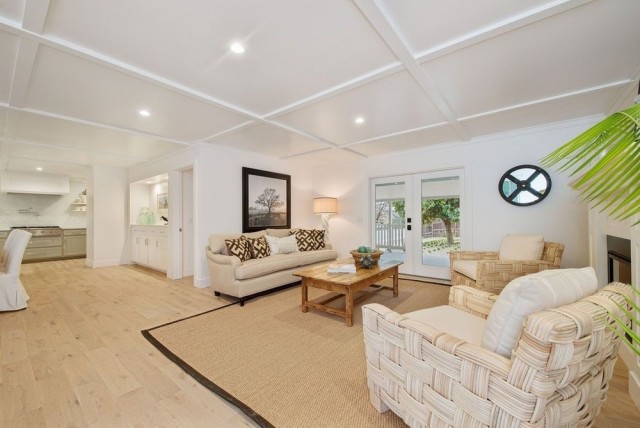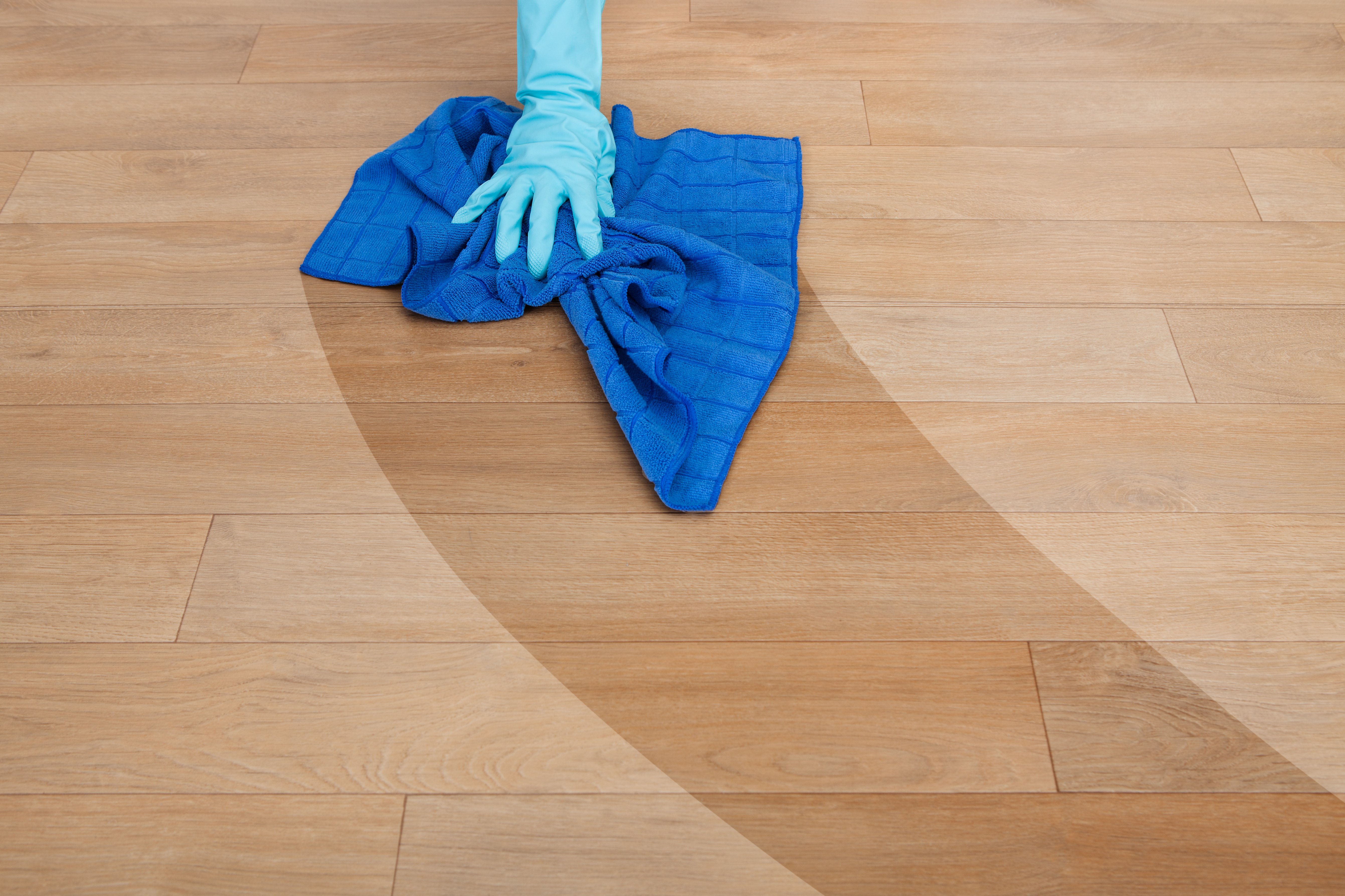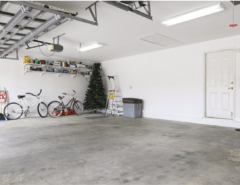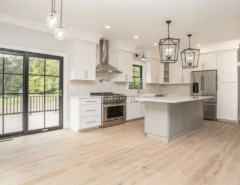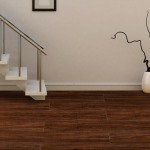Do you want to keep your floors looking perfect for years to come? Damaging ultraviolet (UV) rays from sunlight cause around 40 percent of fading inside your home. Visible light and infrared light from the sun can also do some damage. The sun’s rays don’t just fade your soft furnishings; they can also fade your hardwood floors. And it’s not the only enemy to your floors’ finish. Sharpen your pencils because our latest flooring lesson can help you prevent fading.
Add Window Films
Wood is a very photosensitive material, which means it reacts to sunlight. Depending on its type, sunlight can cause the wood on your floors to darken or fade. Regular window glass blocks around a quarter of the sun’s UV rays, the key cause of floor fading. Window films are protective layers that adhere to the insides of your windows and boost the glass’s UV-ray blocking properties. Studies show window films can block up to 99.9 percent of the UV rays that typically penetrate windows and fade hardwood floors. They also block infrared rays.
As a bonus, window films also regulate the temperature in your home, helping you reduce your heating and cooling bills by up to 60 percent. These potential savings mean your window films can pay for themselves in as little as two years.
Aside from their practical benefits, window films also have an aesthetic appeal. They are traditionally clear, so they do not noticeably change your windows’ appearance. Despite their transparency, they can also reduce glare in your home, which is a real plus for tech fans.
The quality of window films and the amount of visible light they let pass varies, so do your research to find the best film for you. There are some DIY window films, but for the most polished results, it pays to hire professional installers.
Tint Your Windows
Similar to window films, tinting your windows adds a protective that reduces the amount of UV rays passing through. The similarities between tints and films have led some people to use the terms interchangeably. However, while films are traditionally clear, tints change the way your windows look. Most have a pigment that makes the windows look darker. Some are even mirrored.
Window tinting offer comparable UV reduction and energy savings to applying window films. It is more common in businesses than homes, as many people prefer clear windows. However, if you’re concerned about your privacy, a colored tint can be a practical way to shield your home’s interior from prying eyes while minimizing sun damage to your floors. It can also reduce glare, which is a real benefit for home offices and rooms where people watch TV.
Choose Lighter Tones
Light- and dark-toned hardwood floors are both prone to fading, but the fading will be less noticeable on paler woods. When you’re laying down new floorboards, consider paler hardwoods for rooms that get ample sunlight. Red oak, white oak, maple, birch, and ash are all popular, light-colored hardwood flooring materials.
Keeping the wood natural, rather than adding a stain, will keep the wood at its lightest. Alternatively, follow some of the latest home decor trends and apply a white or light gray wash. These contemporary finishes don’t darken floors as traditional stains do. Look for washes with UV inhibitors to protect against fading further.
Refinish or Replace Damaged Spots
If your hardwood floors are already faded in places, don’t despair. Minor fading can be erased by refinishing. The most minor fading may be erased through screening. This type of refinishing lifts the faded polyurethane finish from the wood but does not remove any of the wooden floor itself, as sanding does. It is not suitable for wooden floors that don’t have a polyurethane finish or waxed hardwoods.
More dramatic fading may require sanding. The wood particles this process releases into the atmosphere can affect your health, so remember your protective goggles, a dust mask, gloves, and ear protection. Start with a drum sander fitted with coarse sandpaper (20 to 36 grit). Move the sander slowly and steadily with the wood’s grain for the best results. If you’re refinishing sections near the edges or corners of your room, use an edge sander.
After the first sanding, go back over the area with medium sandpaper (50 to 60 grit). Finally, sand with fine sandpaper (80 to 100 grit). Vacuum the floor to remove wood particles before buffing the sanded area with a fine 100- to 120-grit abrasive screen.
You’re now ready to apply your stain or wash. Breathing in the chemicals in these products can make you sick, so open all the doors, windows, and air vents to keep the room well-ventilated. Apply the stain and wipe off the excess with a clean cloth. Let the stain dry overnight before applying sealant with a lamb’s wool pad or a paintbrush. Use smooth, even strokes for the most professional finish. Check the manufacturer’s instructions for the required number of coats and drying time. Make sure your floor is completely dry before anyone walks on it.
Alternatively, you can replace faded areas with new hardwood floorboards in the same color. Depending on your floor, you may be able to swap out the floorboards yourself. If you’re nervous about home improvement projects, don’t take the risk. A flooring professional can get the job done right without the hassle.
Clean Your Floors With Natural Products
Grocery store shelves are stacked with oil-, wax-, and chemical-based cleaners that claim to keep your hardwood floors looking their best. While the marketing spin can be persuasive, flooring experts insist natural cleaning solutions are the way to go. They’re less harsh on all types of hardwood floorboards, so they won’t strip away color. A simple mix of vinegar and water will clean your floors without affecting their color. Eco-friendly hardwood floor cleaners made with natural ingredients are also good cleaning solutions.
Sunlight and harsh, man-made cleaners are two of the greatest enemies for your hardwood floors. However, smart preventative strategies can minimize their impact and keep your floors looking better for longer.
Resources:
http://www.urbanfloor.com/blog/prevent-hardwood-floors-fading-sun https://jabrocarpetone.com/2018/04/26/protecting-your-hardwood-floors-from-direct-sunlight/ https://www.scottishwindowtinting.com/window-tinting/window-tinting-vs-window-film/ https://www.carpetsinthepark.com/protect-your-floors-from-sun-damage/ https://www.geico.com/more/living/home-protection/sun-proof/ https://theflooringgirl.com/blog/blonde-hardwood-and-light-flooring-which-types-are-lightest/ http://napervillehardwood.com/blog/sunlight-and-fading-hardwood-floors/ https://homeguides.sfgate.com/repair-sun-faded-wood-floors-32112.html https://www.thomasnet.com/articles/chemicals/hardwood-floor-cleaning








